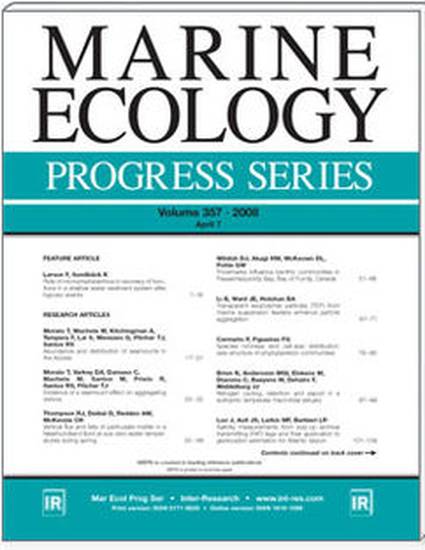
Article
Historic decline in primary productivity in western Gulf of Alaska and eastern Bering Sea: isotopic analysis of northern fur seal teeth
Marine Ecology Progress Series
(2007)
Abstract
The cause(s) for the declines in marine mammal populations in the North Pacific and Bering Sea over the past 30 yr are unknown, despite progress in understanding the present ecology of this system. Explanations that attribute the declines to long-term decreases in marine productivity and/or short-term shifts in oceanographic conditions have been offered, but few studies have explored the issue from an explicitly historical perspective. Here we present a high-resolution, 52 yr time series of δ13C and δ15N values for teeth of juvenile male northern fur seal Callorhinus ursinus collected from a single colony on Saint Paul Island, Alaska in the eastern Bering Sea. Mean annual δ13C declined by ~1.1‰ from 1948 to 2000, while long-term mean annual δ15N did not significantly change. The relatively small but significant long-term decrease in δ13C most likely reflects anthropogenically-driven changes in surface ocean carbon reservoirs and not a decline in primary productivity in the North Pacific and Bering Sea system. To assess short-term shifts in the time series, we detrended the δ13C data; the δ15N time series did not require a correction. The corrected δ13C and uncorrected δ15N values showed low amplitude oscillations with a frequency of ~20 to 25 yr that are roughly in phase through time. The relative timing of these oscillations suggest they may be driven by shifts in the Pacific Decadal Oscillation (PDO); however, the frequency of cycles in our time series is approximately half as long as the frequency of the PDO. Finally, mean δ13C and δ15N values suggest that juvenile males modify their migration patterns by Age 3 (GL3, the third year of growth). Specifically, they remain in high-latitude waters year-round (southern Bering Sea and/or western Gulf of Alaska).
Keywords
- Northern fur seals,
- Callorhinus ursinus,
- Stable isotopes,
- teeth annuli,
- Primary productivity,
- Suess effect,
- North Pacific Ocean,
- Bering Sea
Disciplines
Publication Date
March 5, 2007
DOI
10.3354/meps332211
Publisher Statement
Inter-Research 2007
Citation Information
S. D. Newsome, M. A. Etnier, C. M. Kurle, J. R. Waldbauer, et al.. "Historic decline in primary productivity in western Gulf of Alaska and eastern Bering Sea: isotopic analysis of northern fur seal teeth" Marine Ecology Progress Series Vol. 332 (2007) p. 211 - 224 Available at: http://works.bepress.com/michael-etnier/17/
